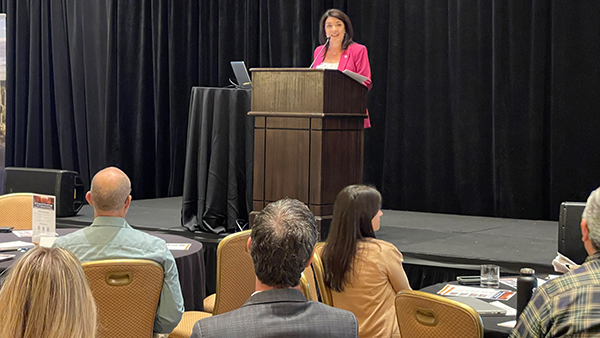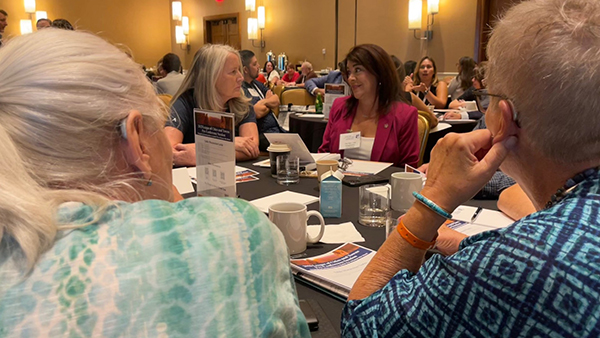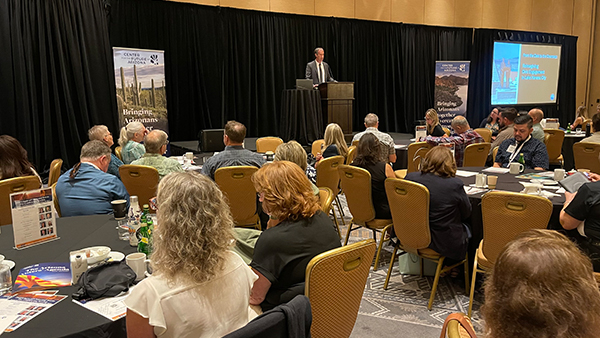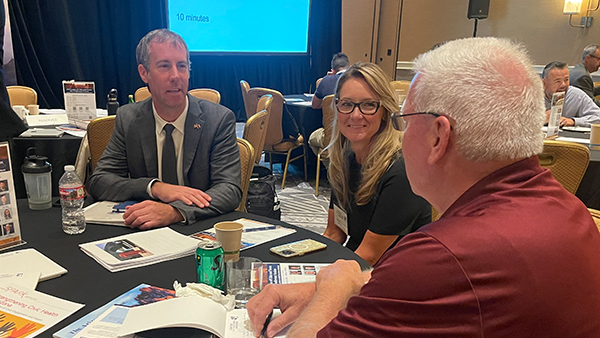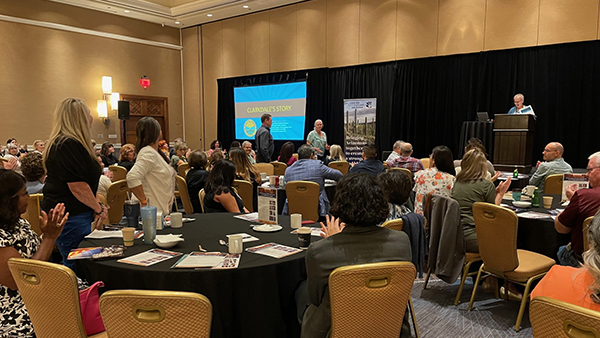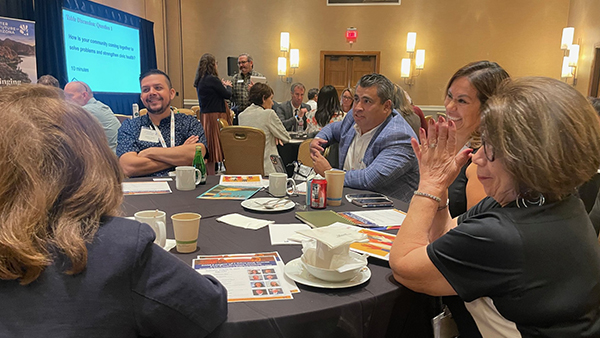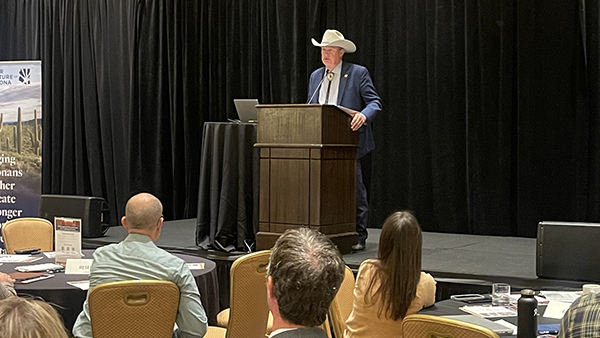Local Leaders, Shared Priorities, and Momentum for a Stronger Arizona
Insights from CFA’s 2025 League of Arizona Cities and Towns Pre-Conference SessionAt the 2025 League of Arizona Cities and Towns Pre-Conference Session, more than 100 leaders from cities and towns across the state came together with CFA to examine what’s working locally and explore how to scale that progress statewide.
Casa Grande Mayor Lisa Fitzgibbons shared an inspiring message:
“Civic engagement is the new infrastructure.” Like roads or utilities, how we engage civically is foundational to achieving any of our hopes for Arizona — requiring intention, trust, and continuous communication.
“Civic engagement is the new infrastructure.” Like roads or utilities, how we engage civically is foundational to achieving any of our hopes for Arizona — requiring intention, trust, and continuous communication.
Casa Grande’s community engagement plan focuses on building trust and participation. This approach reduces resistance, builds buy-in, and ensures people are partners, not the last to know, by:
- Communicating clearly and closing the loop with residents.
- Sharing human-centered stories about projects and investments.
- Offering multiple touchpoints — web platforms, social media, in-person events, youth and senior groups.
- Measuring who participates, how, and using that data to improve.
Mayor Cal Sheehy shared how Lake Havasu City created a dedicated Community Engagement Division to move beyond one-way updates to genuine two-way dialogue, bringing government ”from the dais to the doorstep.” Their strategies include:
- Creating everyday opportunities to engage, like Coffee with the Mayor or City Manager.
- Developing Havasu Residents Academy – an initiative that invites residents and business owners behind the scenes of city operations. Participants meet department leaders, see facilities firsthand, and learn how decisions are made. It’s about transparency, education, and inspiring future community leaders.
- Turning council agenda items into shared stories through videos and social media.
- Combining in-person and digital engagement to reach new residents and build trust.
- Staying intentional in how they listen and adapt to feedback.
Mayor Robyn Prud’homme-Bauer shared how Clarkdale has embedded engagement and transparency into its strategic plan, ensuring residents’ voices shape priorities for growth, economy, and quality of life. Their approach includes:
- Embedding transparency through regular surveys and communications that keep residents informed and engaged.
- Securing grants and resources to move priority projects from plans into action.
- Building organizational strength by retaining staff and fostering a positive workplace culture.
- Advancing long-term resilience by supporting a diversified economy that reflects community priorities.
Vice Mayor Jimmy Davis shared how Tolleson is planning for an inclusive future by engaging residents of all ages — especially seniors. Partnering with ASU Project Cities, they listened deeply through events, surveys, focus groups to create an Aging Community Action Plan that will guide actions on housing, mobility, and public safety. Their approach shows how cities can:
- Proactively engage specific groups, like seniors, to understand barriers.
- Use community-driven events and surveys to identify shared needs and priorities.
- Turn input into actionable plans that keep residents engaged throughout implementation.
Mesa Mayor Mark Freeman shared that the city is grounding its council priorities in strong community connections, making engagement central to advancing workforce, neighborhoods, health, and sustainability. Mesa’s strategies include:
- Engaging residents early in projects & proposals to gather input before reports are finalized.
- Reporting back to residents to show what was learned and how feedback was incorporated.
- Demonstrating that residents don’t just live in Mesa — they belong, and their voices actively shape the city’s direction.
Together, these leaders underscored the heavy lifting required to strengthen the relationship between public and governance — meeting people where they are, inviting input, and creating opportunities for residents to see and shape the inner work of their local governments.
Together, these leaders underscored the heavy lifting required to strengthen the relationship between public and governance — meeting people where they are, inviting input, and creating opportunities for residents to see and shape the inner work of their local governments.
CFA anchored the day by connecting these stories to statewide research on what matters most to Arizonans and the latest Arizona Civic Health Progress Meter data, then facilitating table discussions on how to turn insights into action. By pairing community innovation with data-driven perspective, the session offered both inspiration and practical strategies — equipping leaders to build trust, strengthen civic health, and carry forward momentum for a stronger, more connected Arizona.

